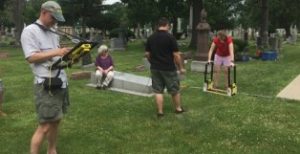It all began with the labor movement’s fight for an 8-hour work day.
In Chicago’s Haymarket Square in 1886, a peaceful demonstration turned deadly when a bomb was thrown. In the chaos that followed, panicked police started shooting indiscriminately, killing seven of their own officers and at least four workers.
In the wake of the Haymarket Riot, eight members of the labor movement were arrested. After a questionable trial, seven of the leaders were sentenced to hang. Two sentences were commuted by the governor, and one defendant committed suicide in jail, while four men were hanged. While the public outrage at the violence created a “red scare” in the United States that set back the cause of the eight-hour day, the martyring of innocent labor leaders galvanized union organizers around the world. May Day celebrations around the world still commemorate those executed because of Haymarket.
Now, 130 years later, 21st century technology and a group of determined historians and archaeologists are bringing the historic Haymarket Affair back into people’s awareness. And Michigan Tech industrial archaeologist Tim Scarlett is playing a small part.
In 1892, leaders began erecting a monument to the Haymarket martyrs at their graves in Forest Home Cemetery in Forest Park, a suburb of Chicago. Before the monument was raised the following year, they buried a time capsule under the cornerstone, containing letters written by the martyrs themselves, family photos, newspaper articles printed at the time and documents from labor unions.
As decades and generations passed, the time capsule was forgotten. Read the full story.
